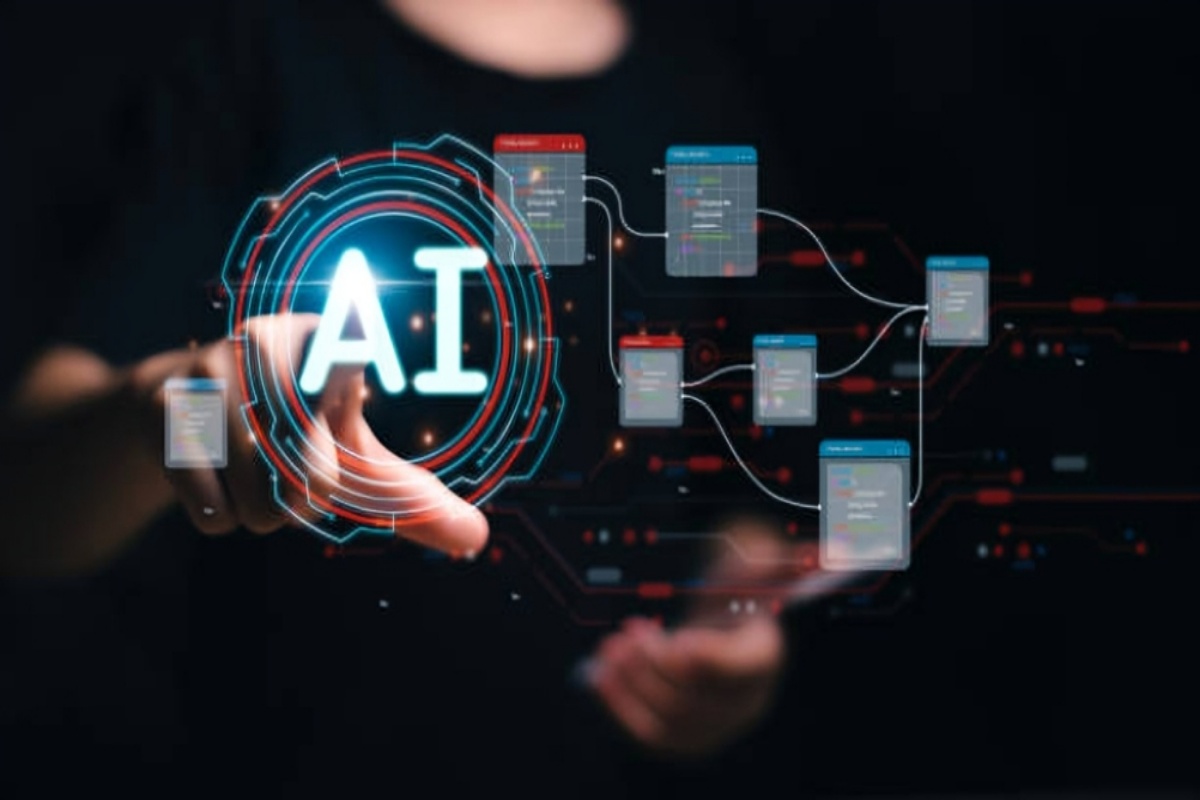In the past decade, Artificial Intelligence (AI) and Blockchain technology have emerged as two of the most disruptive innovations shaping the digital landscape. Each has proven revolutionary in its own right—AI with its data-driven intelligence and automation capabilities, and blockchain with its decentralized, transparent, and immutable ledger system. But what happens when these two technologies converge?
The fusion of AI and blockchain isn’t just a trend—it’s a technological evolution that holds immense potential. Together, they are set to redefine industries, from finance and healthcare to supply chain management and cybersecurity. This blog delves deep into how AI is transforming blockchain, the challenges, opportunities, and what the future holds for this powerful synergy.
1. Enhancing Smart Contracts With Intelligence
Smart contracts are self-executing agreements encoded on the blockchain, triggered automatically when certain conditions are met. While smart contracts offer transparency and trust, they are inherently rigid and deterministic.
AI brings flexibility and adaptability to smart contracts:
- Predictive Analytics: AI can analyze historical data to predict potential outcomes, which can then inform smart contract logic.
- Adaptive Contracts: Contracts can dynamically adjust terms based on real-time data or contextual insights.
- Fraud Detection: AI can scan for unusual activity before a contract is executed, adding a layer of intelligent security.
Use Case:
In decentralized finance (DeFi), AI can be used to dynamically adjust loan interest rates based on market volatility, user creditworthiness, or even global economic indicators—creating autonomous, data-driven DeFi ecosystems.
2. Boosting Blockchain Efficiency and Scalability
Blockchain networks, especially public ones like Bitcoin and Ethereum, are often criticized for being slow and resource-intensive. AI can help optimize the consensus algorithms and energy usage, thus increasing the efficiency of blockchain operations.
AI Applications:
- Resource Optimization: AI can predict and manage network traffic, reducing latency and enhancing transaction throughput.
- Energy Consumption Reduction: By analyzing mining patterns and optimizing processes, AI can make blockchain mining more sustainable.
- Sharding and Load Balancing: AI algorithms can smartly manage shards and data distribution to improve scalability.
3. Revolutionizing Security and Threat Detection
Security is paramount in the blockchain space. While the distributed nature of blockchain offers intrinsic protection, it is not immune to cyberattacks, phishing, and smart contract vulnerabilities.
AI adds a proactive layer of protection:
- Anomaly Detection: AI models can detect unusual behavior, flagging potential hacks or insider threats in real time.
- Predictive Threat Modelling: Machine learning can anticipate new attack vectors by analyzing past incidents and evolving patterns.
- Intelligent Auditing: AI tools can automatically audit smart contracts for bugs or vulnerabilities before deployment.
4. Powering Decentralized Autonomous Organizations (DAOs)
DAOs are community-driven entities with rules encoded on the blockchain. However, most current DAOs rely on simple voting mechanisms and basic logic. Integrating AI enables more nuanced and adaptive governance models.
AI-Driven DAO Features:
- Sentiment Analysis: AI can analyze community sentiment from social platforms to guide governance decisions.
- Decision Support Systems: AI can simulate the impact of proposals and provide recommendations to token holders.
- Automated Operations: AI agents can handle treasury management, payroll, or resource allocation based on real-time data.
5. Enabling Trustworthy AI With Blockchain
While AI transforms blockchain, blockchain also benefits AI by making it more accountable, ethical, and secure.
Key Benefits:
- Data Provenance: Blockchain ensures the integrity and source of data used in AI models, reducing bias and manipulation.
- Auditability: Decisions made by AI systems can be stored on-chain, enabling transparency and post-hoc analysis.
- Secure Model Sharing: AI models and training data can be safely shared using blockchain, enabling collaborative AI without risking data leakage.
6. Use Cases Across Industries
Healthcare
- AI analyzes medical data, while blockchain ensures privacy and data immutability.
- Patient records can be securely shared among hospitals with verifiable data trails.
Finance
- Fraud detection AI algorithms run on secure blockchain networks for real-time threat detection.
- AI-driven robo-advisors integrated with decentralized finance platforms.
Supply Chain
- AI predicts demand and optimizes logistics.
- Blockchain tracks every step of a product’s journey for complete transparency.
Identity Verification
- AI facial recognition combined with blockchain-backed identity systems ensures accurate and secure authentication, eliminating fake profiles or impersonation.
7. Challenges in Integrating AI and Blockchain
Despite the promise, merging AI and blockchain comes with its own set of challenges:
- Scalability: Blockchain’s limited throughput may not support the massive data requirements of AI.
- Data Privacy: AI needs data to learn, but blockchain’s transparency may conflict with user privacy.
- Model Size and Storage: AI models can be large, and storing them on-chain is often impractical.
- Complexity and Interoperability: Building systems that integrate both technologies smoothly remains technically challenging.
Possible Solutions:
- Off-chain computation: Using Layer 2 oracles and AI computation off-chain while storing critical results on-chain.
- Zero-Knowledge Proofs: To ensure data privacy while still enabling AI learning from blockchain data.
- Federated Learning on Blockchain: Distributed AI model training without data sharing, powered by decentralized blockchain networks.
8. The Road Ahead: What the Future Holds
We are just scratching the surface of what’s possible when AI and blockchain are combined. The future holds:
- AI-powered blockchains that manage themselves.
- Decentralized AI marketplaces where data and models are tokenized and traded.
- Self-sovereign identity systems that are both intelligent and immutable.
- Metaverse ecosystems where AI governs virtual economies on blockchain backbones.
As both technologies mature, their convergence will lead to a smarter, more secure, and truly decentralized digital future.
Conclusion
The integration of AI and blockchain represents the next frontier in digital innovation. AI enhances the intelligence, adaptability, and functionality of blockchain systems, while blockchain ensures trust, transparency, and decentralization in AI processes. Together, they form a symbiotic relationship that can revolutionize industries and reshape the way we interact with technology.
As we move forward, embracing this fusion is not just an option—it is imperative for building the intelligent, secure, and decentralized systems of tomorrow.

